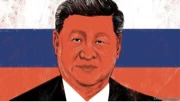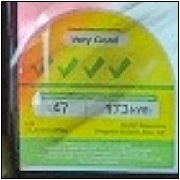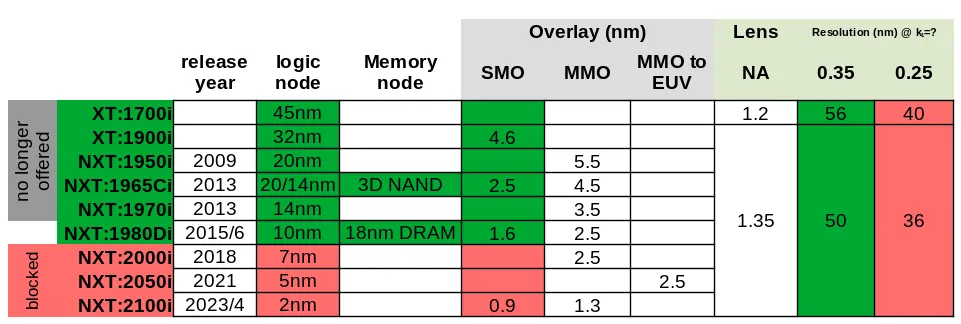(Thread IKs:
fart simpson)
|
KirbyKhan posted:Hello Asia thread, I need Indian racism help. I heard some hot goss about our toddler's cousin's friend cohort of rich people. The light skinned indian couple had an arranged marriage, they have rich people married problems that reaches my ear a whole state away, and I learn today they got a pre-nup and I'm like... that doesn't make sense, what responsible parents would agree to marry off their daughter to similar class known man-child with a prenup? What? I'm not Indian, is this like an Indian thing or is this a white people 2nd/3rd generation Indian thing? its an indian-american thing lol. The Prenup not the arranged marriage thing. Also i say swears online posted:it's a sign their marriage isn't serious and she wants you to gently caress her
|
|
|
|

|
| # ? May 28, 2024 11:13 |
|
genericnick posted:I mean, what's the scenario here? What kind of garbage are you producing that you couldn't in the worst case carry back to wherever you sleep at night? how the hell should I know, what garbage are the Japanese complaining about? soda cans, food wrappers, bananas peels? I wouldn’t want to hold on to a bannana peel all day, especially in humid as Tokyo summers.
|
|
|
|
Tankbuster posted:its an indian-american thing lol. The Prenup not the arranged marriage thing. In Nepal some ethnic groups do have a tradition of negotiations between the families before the wedding in agreed upon. Usually stuff regarding what happens to the woman after a divorce or who will hold the dowry etc so that if anything were to happen, the woman in the marriage the the children would be taken care of.
|
|
|
|
https://twitter.com/60Minutes/status/1718782589430022402 US media demonizing the Georgian government as pro-Russian
|
|
|
|
more an issue of ngo grant eaters learning how effective calling any government pro russian is
|
|
|
|
Marzzle posted:need the context on this one or is it a joke can't tell it's a pun on the name of the author "Xi Van Fleet." some years ago there was a lot of western press about so-called execution vans.
|
|
|
|
Atrocious Joe posted:https://twitter.com/60Minutes/status/1718782589430022402 lol was this one of the groups that protested the laws requiring ngos to disclose where overseas funding was coming from?
|
|
|
|
Atrocious Joe posted:https://twitter.com/60Minutes/status/1718782589430022402 A greater irony is that most of the Russians they are demonizing for starting businesses and renting apartment were actually liberal opposition back in Russia...that is why they are in Georgia in the first place. It is just that the Georgian right can't keep their xenophobia in their pants at this point.
|
|
|
|
My understanding is that Japanese local governments spend double digit percentages of their budgets on things like sanitation and cleanup as a reason for why their cities look so relatively clean and then it's just a racial stereotype that outsiders think it's a cultural thing that they're just so "disciplined" to keep their surroundings neat and tidy
|
|
|
|
gradenko_2000 posted:My understanding is that Japanese local governments spend double digit percentages of their budgets on things like sanitation and cleanup as a reason for why their cities look so relatively clean and then it's just a racial stereotype that outsiders think it's a cultural thing that they're just so "disciplined" to keep their surroundings neat and tidy Visiting Japan was so awesome in this regard. Every time a train pulls into the station there's a sanitation crew doing end to end turnover clean up vacuuming etc. and crews on the platforms and roaming the stations. Must be nice. Edit: to be clear I meant the shinkansen not random subways or trams.
|
|
|
|
anime has taught me that high school students take turns to clean their classrooms? so maybe that lends itself to people who have been conditioned not to make a mess in the first place
|
|
|
|
ughhhh posted:In Nepal some ethnic groups do have a tradition of negotiations between the families before the wedding in agreed upon. Usually stuff regarding what happens to the woman after a divorce or who will hold the dowry etc so that if anything were to happen, the woman in the marriage the the children would be taken care of. yeah they don't sign court documents lol. At this point arranged marriages between middle class indians are dates but both sides bring their parents along. Since dowries are illegal people will gift their kids a new apartment or something with the ownership being their respective child.
|
|
|
|
wanting more tourists but non of the baggage that comes with it is very neolib brains
|
|
|
|
Thanks thread!
|
|
|
|
gradenko_2000 posted:My understanding is that Japanese local governments spend double digit percentages of their budgets on things like sanitation and cleanup as a reason for why their cities look so relatively clean and then it's just a racial stereotype that outsiders think it's a cultural thing that they're just so "disciplined" to keep their surroundings neat and tidy it's both. you don't get local governments spending those kinds of resources on keeping things clean if the populace doesn't prioritize it as well. so most people in japan are adverse to littering/untidiness, and as anyone who lives here can tell you, some people (especially older people) can be downright neurotic about it. you can see that break down when you go to places like red light districts where one of the manifestations of the general "i don't give a gently caress" attitude is increased amounts of littering and general untidiness.
|
|
|
|
Votskomit posted:The podcast If Books Could Kill did a double episode on just how unscientific and useless Nudge theory is. i don't know what nudge theory is, but if it's the same as peer pressure it's remarkably effective with the people that live here. i'd agree that it isn't gonna do poo poo for tourists tho.
|
|
|
|
Stringent posted:i don't know what nudge theory is, but if it's the same as peer pressure it's remarkably effective with the people that live here. It's not the same as peer pressure.
|
|
|
|
Stringent posted:i don't know what nudge theory is, but if it's the same as peer pressure it's remarkably effective with the people that live here. quote:Nudge theory is a concept in behavioral economics, decision making, behavioral policy, social psychology, consumer behavior, and related behavioral sciences[1][2][3][4] that proposes adaptive designs of the decision environment (choice architecture) as ways to influence the behavior and decision-making of groups or individuals. Nudging contrasts with other ways to achieve compliance, such as education, legislation or enforcement.[5] having posted all this, I would like to reiterate yet again that this entire concept has been debunked as having used bogus data. It's not loving real in any sense of the word.
|
|
|
|
The problem is the assumption people are being careless and not giving a gently caress when the thing is they are not presented with the option to do what IS polite and acceptable behaviour in their home countries and cultures. There were huge anti-littering campaigns a generation ago in Western countries combined with programs to place litter bins everywhere reasonable. When you want to encourage a change of behaviour, you do everything possible to make the new behaviour easy to do.
|
|
|
|
ChinaTalk: Litho World & Commerce: Lost in Translation?quote:The United States and its allies are engaged in a technology cold war against China to block semiconductor computing capabilities used in artificial intelligence and military applications. In recent years, the US Commerce Department has applied a series of export restrictions to achieve just that — and yet, just a few weeks ago, Huawei shocked the world with advanced chip technology that those restrictions were intended to prevent. TL; DR - the Department of Commerce didn't understand lithography well enough to form a set of rules that would be effective in stopping Chinese lithography in the ways which they wanted it to be stopped, when combined with ASML wanting to help China because they are a big customer, and China having enough money and effort to throw at a problem to overcome inefficiencies forced upon them by the rules that did have a notable effect.
|
|
|
|
gradenko_2000 posted:ChinaTalk: Litho World & Commerce: Lost in Translation? 真主至大
|
|
|
|
gradenko_2000 posted:ChinaTalk: Litho World & Commerce: Lost in Translation? many lmaos in this article
|
|
|
|
gradenko_2000 posted:My understanding is that Japanese local governments spend double digit percentages of their budgets on things like sanitation and cleanup as a reason for why their cities look so relatively clean and then it's just a racial stereotype that outsiders think it's a cultural thing that they're just so "disciplined" to keep their surroundings neat and tidy i was going also going to joke that instead of engaging in identity politics and cultural philosophy, the city and the metropolitan region should hire workers to pick up trash and move that trash to dumpsters and move those dumpsters to sanitation plants. but they already do that. keep doing that, at larger scale. i like fun, clever, educational design solutions a great deal but that's just the cherry on top. pay workers to maintain your infrastructure. Palladium posted:wanting more tourists but non of the baggage that comes with it is very neolib brains
|
|
|
|
Palladium posted:wanting more tourists but non of the baggage that comes with it is very neolib brains japan tends to take a while to get its head and its rear end wired together, but once it does it tends to get things done in a timely and effective manner. good example is english signage in the public transportation system. back when i got here it was extremely limited and sparse, but now it's extremely good and that's 100% a response to increased tourism. if the trash thing becomes an issue big enough to make it up to the powers that be, i'd expect them to start putting out trashcans again or something.
|
|
|
|
The inscrutable nature of the oriental makes them slow to respond but quick to swing into action - it is due to the japanese concept of Kanryō - which is unique to it.
|
|
|
|
Votskomit posted:The podcast If Books Could Kill did a double episode on just how unscientific and useless Nudge theory is. Started listening to this and so far I'm really enjoying the hosts' exasperation lol
|
|
|
|
gradenko_2000 posted:ChinaTalk: Litho World & Commerce: Lost in Translation? The issue is not the DOC is incompetent (they are), the issue is the entire semiconductor industry doesn't want the sanction and does the minimal to comply and leave enough holes in the sanctions for the Chinese companies to get around sanctions. It's happening in the AI GPU sanctions. Of course one can argue the AI sanction is a fake political goal biden created out of thin air to make himself look good in reelection.
|
|
|
|
Tankbuster posted:The inscrutable nature of the oriental makes them slow to respond but quick to swing into action - it is due to the japanese concept of Kanryō - which is unique to it.
|
|
|
|
KirbyKhan posted:Hello Asia thread, I need Indian racism help. I heard some hot goss about our toddler's cousin's friend cohort of rich people. The light skinned indian couple had an arranged marriage, they have rich people married problems that reaches my ear a whole state away, and I learn today they got a pre-nup and I'm like... that doesn't make sense, what responsible parents would agree to marry off their daughter to similar class known man-child with a prenup? What? I'm not Indian, is this like an Indian thing or is this a white people 2nd/3rd generation Indian thing? It's your sign to hit on the mothers of both children involved. If that doesn't work, hit on the fathers instead.
|
|
|
|
gradenko_2000 posted:having posted all this, I would like to reiterate yet again that this entire concept has been debunked as having used bogus data. It's not loving real in any sense of the word. But I like to piss on the fly or into the soccer goal in the urinal, so maybe the secret is nudge theory only works on piss
|
|
|
|
Tankbuster posted:The inscrutable nature of the oriental makes them slow to respond but quick to swing into action - it is due to the japanese concept of Kanryō - which is unique to it. i don't see what the oriental bit has to do with it? japan's leadership systems, from top to bottom, are very much focused on consensus and nobody really sticking their necks out. that usually means that a problem has to get pretty bad before it gets addressed, but once it does get addressed there aren't any obstacles to getting it addressed quickly and thoroughly. good example is cashless payments. used to be you couldn't go out in tokyo without carrying cash because so many places were still cash only. once covid hit, in the space of like 3-6 months tokyo at least went from maybe 40% of places being cash only to like, iunno, 5% tops?
|
|
|
|
Thats any place with a bureaucracy you fool. It takes a time for policy to be drafted, planned - etc before you get results.
|
|
|
|
Stringent posted:i don't see what the oriental bit has to do with it? japan's leadership systems, from top to bottom, are very much focused on consensus and nobody really sticking their necks out. that usually means that a problem has to get pretty bad before it gets addressed, but once it does get addressed there aren't any obstacles to getting it addressed quickly and thoroughly. lol wtf, that sounds like how every other place works too. everyone did the same cashless poo poo here too and a lot of the world?
|
|
|
|
iunno, i've only lived in the US and japan, so i don't have a wide range of experience. it's a pretty pronounced difference between those two places though, but it'd take a lot more writing than i'm willing to do to back that all up.
|
|
|
|
fits my needs posted:lol wtf, that sounds like how every other place works too. everyone did the same cashless poo poo here too and a lot of the world? i've been running around without cash for over 10 years now, the only places i still use cash are remote locations where there's no cell service so not even the gsm pos terminals work, so clearly not everywhere 
|
|
|
|
Votskomit posted:The podcast If Books Could Kill did a double episode on just how unscientific and useless Nudge theory is. The trashfuture episode (with Felix beiderman) on nudge theory was pretty good
|
|
|
|
quote:China's economy is going to implode harder than the OceanGate Titan. The raw brilliance of collapsing the population of your low skill production country. US hegemony yet again preserved by the supreme stupidity of everyone else.
|
|
|
|
whats the timestamp of this syq
|
|
|
|
collapsing the population? Low skill? What the gently caress is any of this?
|
|
|
|

|
| # ? May 28, 2024 11:13 |
|
Regarde Aduck posted:collapsing the population? Low skill? What the gently caress is any of this? Skill issue.
|
|
|

































